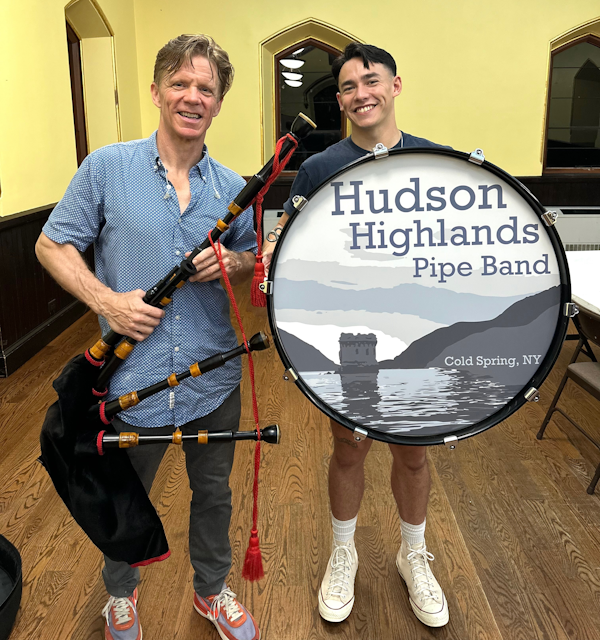Pipe Band registers Highlands ‘sett’
A distinctive look can establish pride and set a group apart, whether it’s Yankee pinstripes, the golden helmets of the Fighting Irish of Notre Dame or the iconic painting scheme of the U.S. Air Force Thunderbirds.
For the Hudson Highlands Pipe Band, what distinguishes it from other bands is its tartan, or “sett,” which became official when it was listed last year in the Scottish Register of Tartans, established by the country’s Parliament in 2008.
“For years, we wore the Royal Stuart tartan,” says James Hartford, the band’s pipe major. Red is its dominant color, making it popular with fire departments.

The local pipe band, established in 2005, was originally associated with the Cold Spring Fire Co. but later became Cold Spring Pipes and Drums and, more recently, the Hudson Highlands Pipe Band.
Hartford, an architect, designed the tartan with help from Aeneas Eaton, a graphic designer who sometimes plays bass drum with the band.
Each of its colors represent an aspect of the Highlands’ history or geography, Hartford says: blue for the Hudson River; amber for the mountains and foliage; red for iron industries, including mines and West Point Foundry; blue-grey tones for West Point; and two white lines for the railroads that flank the river.
A tartan can have three to five variants. The Hudson Highlands tartan features the “Hunter” version, historically associated with stealth because it can blend in with woodland surroundings. The band also considered “ancient” and “contemporary” variants that feature muted and vivid tones, respectively.

Creating the tartan inspired considerable debate among the band’s 25 members, Hartford says, particularly over the colors. Hartford says the group reached consensus once he explained the rationale behind each color.
The fabric, a heavy wool, was produced by Lochcarron of Scotland. The first kilts arrived in the fall. In the U.S., tartan and plaid are often used synonymously, but while a tartan is a plaid, not all plaids are a tartan. Tartans have the same pattern of stripes running vertically and horizontally, creating overlapping square grids. Plaids are not necessarily identical in both directions and can vary in size, pattern and color. Tartan is also usually woven in a two-over-two twill pattern, creating an illusion of new colors when the original hues are blended.


Congratulations to the Highlands Pipe Band and to James – well done!
I loved this article. Not only did I learn something — how interesting the meaning behind the vibrant tartan James Hartford and Aeneas Eaton designed — but I was plucked by a heartstring: James played the pipes at my father’s memorial service last year and will forever have a special place in my heart. Bravo, Hudson Highlands Pipe Band.